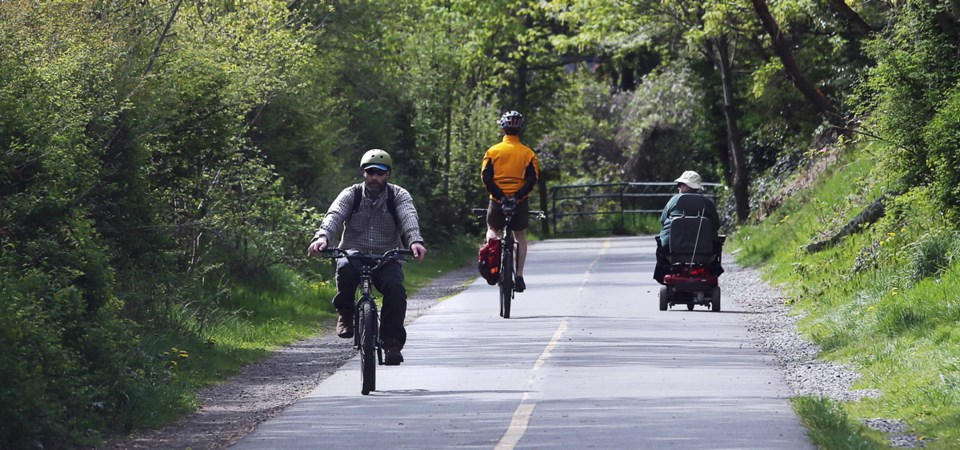“We have no cyclists in Copenhagen,” declares Mikael Colville-Andersen as he stirs his coffee.
These are strange words from a man who has played a leading role in helping the city reach the staggering feat of having 41 per cent of all trips to work and education being taken by bicycle. They are also words that contrast sharply with the endless flow of cyclists I see going by outside the café in Copenhagen’s Christianshavn district.
Colville-Andersen clarifies. “Here, bicycles are like vacuum cleaners. Everyone has them. They are simply tools that make our lives easier. So we don’t have cyclists. We just have people who ride bikes because it is the fastest and best way to get around the city. If you give people a fast way to get from A to B, then they take it.”
The distinction he draws is fundamental. Cycling debate in Canada is often an “us versus them” narrative in which new biking infrastructure represents appeasement of a small group of biking enthusiasts to the detriment of the majority of motorists. By contrast, leading cities around the world are abandoning this outdated view, giving cyclists a legitimate place in the transportation hierarchy. This makes urban trips safer and faster for everyone.
“Copenhagen is not the only cycling story anymore. The real stories now are all the other leading cities that are rocking it,” says Colville-Andersen. He then rattles off names of cities that have made large, fast leaps toward becoming hospitable for bikes. Seville, Paris, Barcelona and Buenos Aires have all reached once-unthinkable levels of bike ridership.
Seville, for example, increased the “mode share” or percentage of the population that bikes from 0.2 per cent to seven per cent in five years.
Perhaps the most striking example, and the one with a climate most similar to ours in B.C., is Dublin. There, biking ridership went from close to zero to 10 per cent in the city centre in only five years. That 10 per cent figure is more than double the amount of cycling that happens in the core of just about any Canadian city — including Victoria.
The urban engineering and design behind these leaps is straightforward. Above all, it requires physically separating people on bikes from car and truck traffic with protected cycle lanes.
The surprise, perhaps, is how many people, apart from people on bikes, actually benefit from these changes. It turns out, for example, that bikeable cities are good for productivity, business, and overall economic development.
“If we ran our cities the way we ran businesses, then bikes would be everywhere,” says Colville-Andersen. “Numerous studies shows that cyclists create more revenues for city shops. They are not just loading up once a week at big-box stores but buying locally, and regularly. A study by the New York Department of Transportation, for example, found that bike lanes increased business at retail stores by 49 per cent, compared to a three per cent increase borough-wide.
Health care is also a driver of the economics of cycling. Denmark, for example, has determined that on average, society earns about 0.23 euros (32 cents Canadian) for every kilometre cycled through improved health-care outcomes and a more productive workforce, whereas for every kilometre driven in a car, society pays 0.16 euros (23 cents Canadian) for health-related problems, as well as the cost of road repairs and pollution.
The business numbers have not escaped the notice of politicians. Following the economic downturn in 2008, Danish leaders prescribed the building of more biking infrastructure as a way to stimulate economic development in their cities.
“Even right-wing politicians don’t vote against bike infrastructure,” says Colville-Andersen. “They have had the numbers shoved in their face for so long that they recognize that biking infrastructure is simply good business.”
As cyclists whiz past our café window, something else becomes readily apparent. A bikeable city encourages all sorts of people to ride: diverse age groups, families with children, women in high heels, people doing chores and people just getting around. Every possible segment of society seems to be passing by our window.
“That,” Colville-Andersen explains, “is because we built infrastructure for those who could be riding bicycles, not just those who currently are riding bicycles.”
In other words, people of all stripes choose to bike when it is clearly a safe, sane and easy thing to do. It would be good news for everyone in Victoria if we had fewer cyclists, and instead, more folks who get around by foot and bicycle because it is the fastest, safest and most economical option.
Roy Brooke of Victoria is the principal of Brooke & Associates Consulting.



